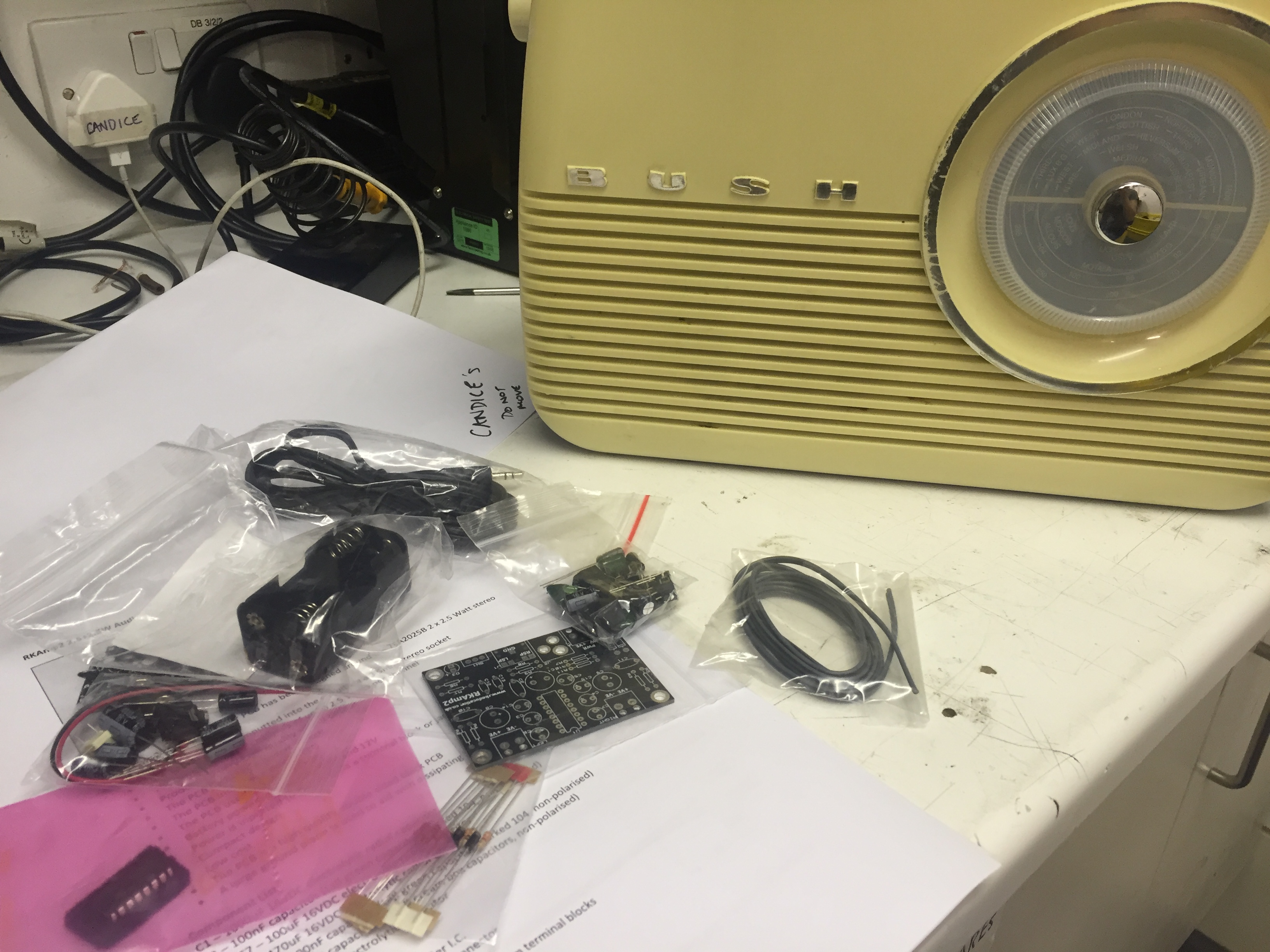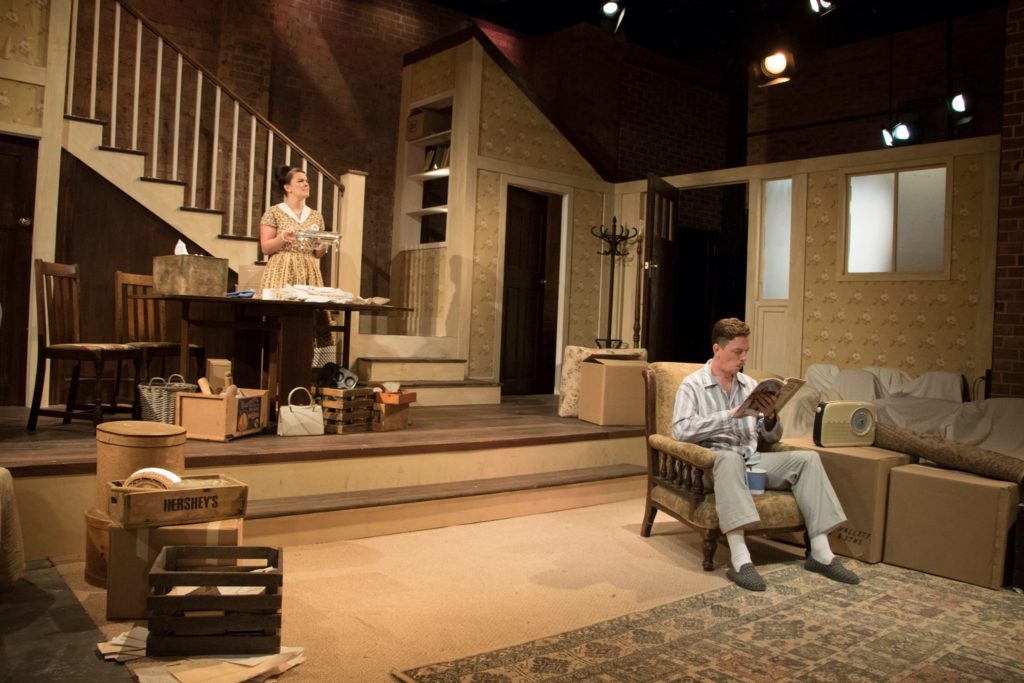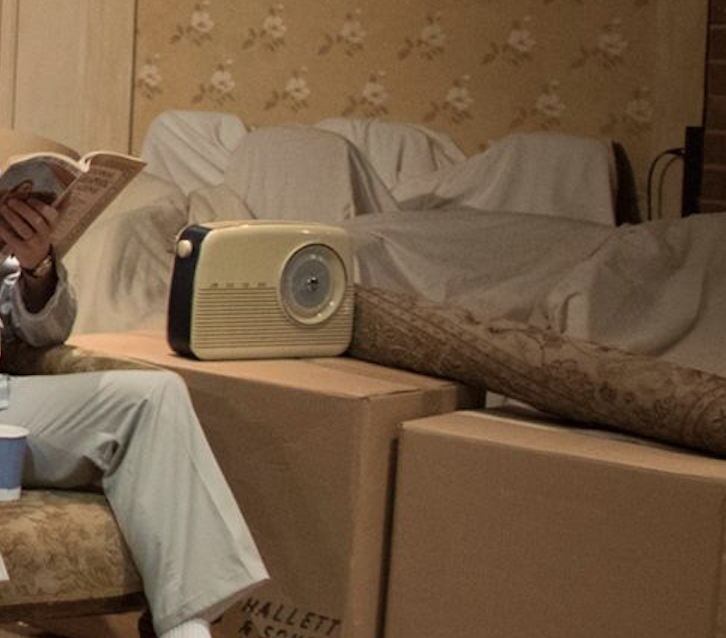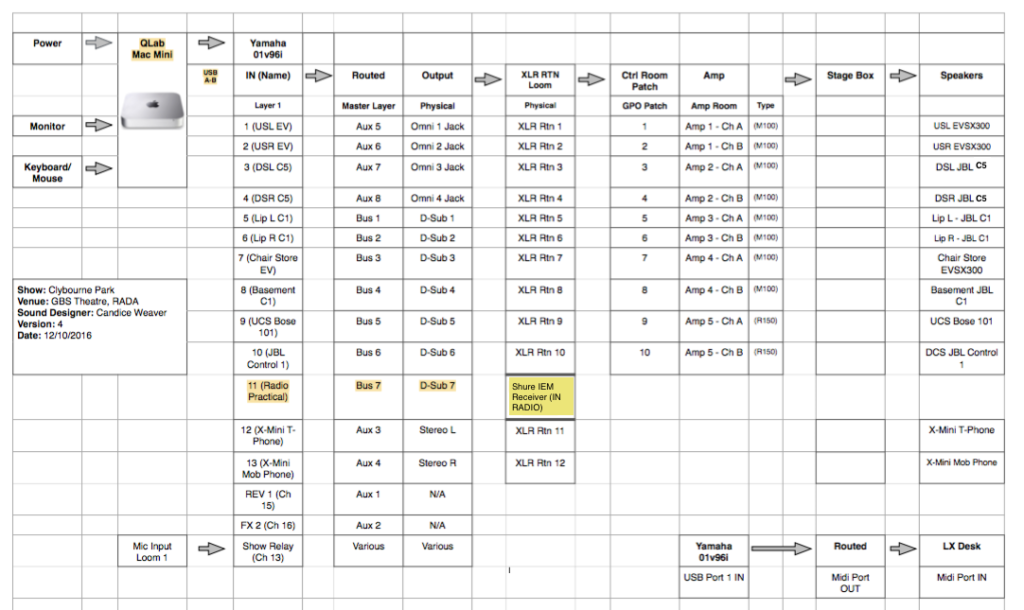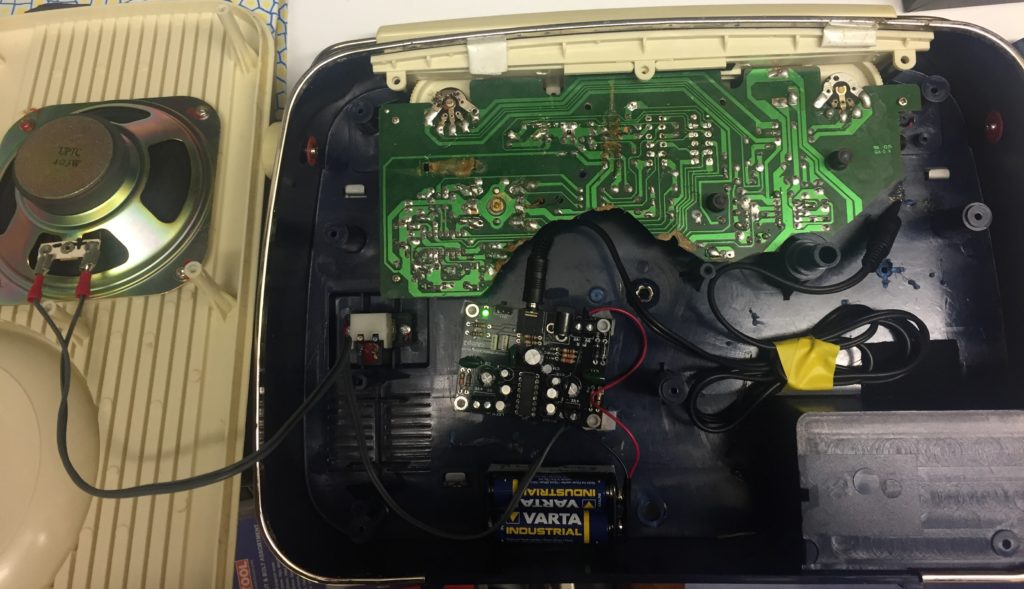Recently for a RADA show that I was sound designing, it seemed that there was scope to make a practical radio. Practicals are some of the best fun in theatre without the audience knowing that there are little bits of trickery happening.
The show was Clybourne Park by Bruce Norris in RADA’s GBS Theatre, in-the-round, directed by Michael Fentiman and designed by James Turner. The story is told in two halves; the first Act being set in 1959 in a suburban Chicago house, and we are introduced to a married couple. As the Act goes on we learn that their son died, and that the remaining parents are moving to escape neighbourhood gossip; what follows is a heated discussion as to who should be allowed to move into the house after they’ve gone. Introducing Act 2, we have moved on 50 years and are now in 2009 in the same house. A group of people from the neighbourhood are discussing what should become of the house, and who exactly should move into it (which echoes Act 1). More arguments ensue and the play ends on a flashback to 1959, with a conversation between the deceased son and his mother. It’s a politically charged play full of dark humour and uncomfortable truths.
Here is the end product:
I found that 1950’s-era replica in Deptford Market for a tenner, and it’s the best practical I’ve ever made (and I must confess that it functioned as a real radio before I destroyed the inside of it). I’d decided to go ahead and make the practical myself, by way of a challenge in between attending rehearsals and dealing with paperwork.
So I bring the radio back to the sound workshop, and I’ve ordered a mini-amp online that will sit inside the radio, along with an IEM, and I’d been hoping to hook it up to the speaker that came with the radio itself. Quite happily, my mini-amp arrived that same day so I can get started straight away.
One problem, however.
Now I don’t know what I was expecting, but I certainly didn’t expect that the amp would come in pieces and I’d have to solder it all myself.
So now I had to solder this thing having never really paid attention to circuit boards before. I dug out some instructions (all 2 pages of them) off the company’s website and set to work.
That said, this is probably the most common way to create a practical in theatre with the basic workflow as such: Qlab – Sound Desk – IEM Transmitter – IEM Receiver – Mini-Amp – Speaker
Most mini-speakers will simply be attached to the IEM because they’ll be self-powered, however, my system just so happened to need an amp because it was just the cone that sits inside the radio. Below is my system diagram for the show, so that we can see where the practical will sit in the larger scale of things (relevant signal flow is highlighted).
Practical radios are almost two a penny in theatre amongst other fan favourites such as doorbells, telephones, intercoms, etc., all of which would have their own tried-and-tested ways of being produced.
For instance, we’ve had a couple of shows that require practical mobile phones, and for this we use an app called StageCaller that works over Midi/OSC – you’ll need an iPhone to do this and Dropbox, and for the best results, a stable WiFi connection that is used solely for the practical phone.
To get the sounds onto the StageCaller app you’ll need to download them from Dropbox and upload them in the app – all you’re doing in Qlab is sending OSC commands – all of the audio lives in the app. So from here you can trigger the sounds via OSC from your Qlab file (with relevant IP addresses) and in the most recent version, the app allows you to set up ‘heartbeat’ pings so that it doesn’t become completely inactive and triggers precisely when you want it to. There are various other little tricks that you can set up, too, including the sound cutting out as the character lifts the phone to their ear, or no sound at all and just a text vibrate.
You can find out more about the functionality of StageCaller on the Figure 53 website
Back to the radio, I powered through and soldered the entire circuit board and tested it by plugging my phone into the mini-amp via a mini jack-mini jack cable, and hooking up 2 other speakers (L/R) that also came free with the kit from the online shop. Miraculously – it worked!
So now I had a working system, and all I had left to do was to find a way to attach all of this inside the radio (lots of glue and velcro was involved here – not my finest prop-making) and plug up my IEM – for this I was using a Shure PSM300 System – and have a go at sending audio to it via Qlab.
It worked like a dream and was the most stable practical that I’ve used – of course, I had a backup in place just in case something went wrong with it, which is also quite common practice. The backup was simply an assigned key on my sound desk (a Yamaha 01V96i) which my operators could press, and the audio being sent to the radio would be internally reassigned to a JBL Control 1 speaker rigged above the stage, which would hopefully not interrupt the action! (As it was, the ops never had to use the backup, but it’s very good practice to have something in place anyway). My Operators, who took turns opping the show every day, then had the task of looking after the practical radio and changing the batteries before every show.
Practicals to me are little bits of fun that we can add in to a show to represent something that otherwise, a good few years ago, would have ended up being played from the nearest speaker, or being mimed. We’re quite fortunate that we now have such wide ranges of technology to play with, and again little tricks up our sleeves to truly create our own version of reality.
*all production photo credits belong to Linda Carter for RADA
